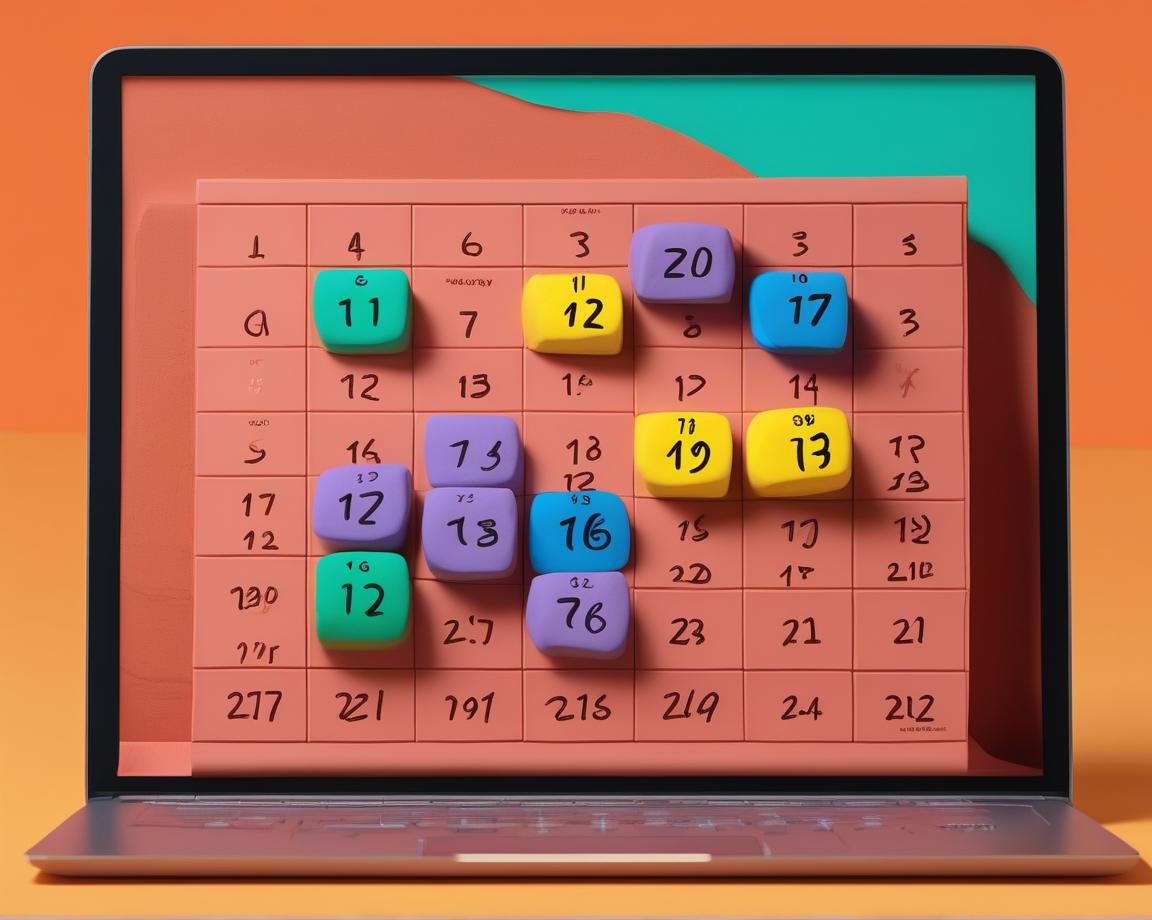Lead generation is a crucial aspect of sales and marketing for venture capital firms. In this blog post, our expert Eric Nowoslawski shares his tips and frameworks for lead generation through cold emails. By following his strategies, you can secure new investment opportunities, generate high-quality leads, and reach your target audience effectively. This post covers topics such as the importance of personalization in cold emails, the role of a clear call-to-action (CTA), defining your value proposition and marketing angle, and tips for crafting an effective cold email sequence.
Subject Line Matters for Lead Generation
The subject line is the first impression of your cold email and plays a crucial role in lead generation. It should be compelling and entice the recipient to open your email, capturing their attention and making them want to learn more about your offer.
Personalization is Key
To make your cold email copy compelling and increase your chances of lead conversion, it's essential to personalize your emails. Write like a human and provide context that resonates with your potential investment partners.
Focus on Response, not Sales
Lead generation is a process, and it takes time to convert a cold lead into a warm investment opportunity. The goal of your first cold email should be to secure a response and start a conversation with the recipient.
Include a Compelling CTA
Provide value to your potential customers and make it easy for them to take the next step in your sales funnel. Highlight your competitive advantages, showcase how your firm can solve pain points, and include a clear call-to-action (CTA).
Emphasize Your Value Proposition
Communicate how your firm can help the recipient achieve their desired outcome and emphasize the end goal they will be able to achieve with your investment.
Be Concise and Straight to the Point
Your prospects are busy, and your emails are an interruption in their day, so keep them brief and to the point. Limit your emails to under 75 words and ensure that you fully understand your target audience and your firm's value proposition.
Limit the Number of Follow-Up Emails
Based on data from SalesLoft and Gartner, it's best to send about four follow-up emails over six weeks. If you haven't received a reply, move on to new prospects and avoid sending too many emails, which may lower your open rates.
Define Your Value Proposition and Marketing Angle
To communicate your offer effectively, you need a clear and concise value proposition. The most effective value propositions are focused on increasing profitability, saving time, or reducing risk. Create a marketing angle that resonates with your prospects, keeping in mind what they are most concerned with: maximizing profits, minimizing risk, or something else. Consider using cold email templates to maximize the success of your lead generation campaign.
By following these tips, you can improve your lead generation process and increase the conversion rate of your marketing and sales campaigns. Utilize social media platforms such as LinkedIn, as well as email marketing, content marketing, and webinars to reach your target audience. Utilize lead generation tools such as Hubspot, a CRM, and SEO to track and manage your leads in real-time. Consider lead scoring, A/B testing, and the use of lead magnets, white papers, and email lists to generate qualified leads and fill your sales pipeline with new leads.
Subject lines
Try to write subject lines that could’ve been sent to your readers by their own customers or colleagues. Make sure to keep them short (2-3 words) and casual (no formal language, not capitalized). Example (good): monthly SEO analyticsExample (bad): Don’t hire your next sales development representative until you do this!(Tip: listicle-type headlines that work well for SEO articles never work well in emails).Needless to day, never bait-and-switch people in your subject lines. (Don’t pretend that you have a customer for someone and then pitch lead generation services.) Make sure that your subject lines are connected to your message.
Line 1: Why you’re reaching out
In the first line of your email, describe the reason that you’re reaching out. Did you notice an announcement about your prospect’s company? Did you just read their LinkedIn post? Show that you’ve done homework to ensure that the connection is relevant.A useful template for this is: It looks like your company is [experiencing an event], and from my experience, this means [insight].Example: I was looking into your company, and I used the SimilarWeb Chrome extension to see that your web traffic has been declining in the last three months.
Line 2: How your product enables them to do better
Now, it’s time to describe a problem you noticed that your prospect might have and how your product can help them solve it. Example: Your web traffic might be declining for many reasons, but one big factor may be that you don’t have enough content on your site. I noticed that your last blog post was from three years ago.
Line 3: Social proof
Then, give your reader social proof to show them that you’re reputable and have past experience helping companies with similar problems.Example: I just helped [X company relevant to your prospect’s industry and size] increase their search traffic by 250% in six months through SEO-optimized content.
Line 4: Interest-based call to action
Finally, give your recipient a way to engage with you. Your biggest goal is to get an email in response. A good template for this final call to action is: if we could help you with [problem], would that be useful to you?Let’s put all our learning together in this example of a cold email from an external sales team to a financial services company:
Hi [X],
I noticed that you're in the financial services industry and you've got a company with 15 employees. From my experience, I assume that you’re keeping a lean sales and marketing team. I’m currently working with [a financial services company similar in size to the prospect] on a campaign that is getting their sales team 2-3 interested leads a day. We’re targeting people who’ve recently changed jobs to see if they’re doing their rollover correctly. If I could help you connect with potential customers like this, would that be helpful to you?
Cheers,[Y]
Overall framework for an entire email sequence
In the previous section, we shared a framework for your first cold email. To recap, your first email discusses how you noticed a company, how you can solve their problems, and how you’ve done this in the past. Now, let’s go over the rest of your email sequence.
Email 2: Additional context
Email 1 was meant to succinctly communicate that your product could help your prospects solve important business problems. Email 2 is meant to add more detailed context on how. This is the place to add more information about product features or the transformation you’ll enable for your customers.Here’s an example using the financial services company we pitched above:
Hi [X],
I previously mentioned that I’ve been helping [X company] find customers by contacting people who’ve recently changed jobs to see if they need help with new benefits packages or rollover plans. For a bit more context, we do this by constantly monitoring LinkedIn Sales Navigator for people who are changing jobs. When they change jobs, we reach out on your behalf to see if they need your services.We have the copy ready and I have a video that can show you how to build this kind of list. Would that be interesting to you?
Cheers,[Y]
Email 3: Angles
If your prospect still hasn’t replied, you should try using a different angle. Your first two emails, e.g., may have emphasized that your product would help your reader earn more revenue. But what if driving more revenue isn’t their biggest priority? Email 3 gives you the chance to change your angle. Perhaps, instead of emphasizing that your product can help someone make more money, you can emphasize how it can help them save time.
Email 4: The breakup email
In your final email, ask your prospect if there's somebody else at their company you should speak to. Example: I noticed that [your company] has 255 employees. Perhaps this isn't your area of focus. Is there somebody else that I should be speaking to? Data indicates that people respond to breakup emails more often than they respond to the other emails in a sequence. If you remain available to connect while offering to route yourself to a more relevant person within their organization, you will increase your chances of getting a positive reply.By now, you have a framework to use to write effective cold email sequences. This is a simple baseline that you can supplement with many different kinds of marketing tactics (LinkedIn, cold calling, ads, etc) to strengthen your results. If you have any suggestions or questions, please reach out to Eric!
Lead generation is a crucial aspect of sales and marketing for venture capital firms. In this blog post, our expert Eric Nowoslawski shares his tips and frameworks for lead generation through cold emails. By following his strategies, you can secure new investment opportunities, generate high-quality leads, and reach your target audience effectively. This post covers topics such as the importance of personalization in cold emails, the role of a clear call-to-action (CTA), defining your value proposition and marketing angle, and tips for crafting an effective cold email sequence.
Subject Line Matters for Lead Generation
The subject line is the first impression of your cold email and plays a crucial role in lead generation. It should be compelling and entice the recipient to open your email, capturing their attention and making them want to learn more about your offer.
Personalization is Key
To make your cold email copy compelling and increase your chances of lead conversion, it's essential to personalize your emails. Write like a human and provide context that resonates with your potential investment partners.
Focus on Response, not Sales
Lead generation is a process, and it takes time to convert a cold lead into a warm investment opportunity. The goal of your first cold email should be to secure a response and start a conversation with the recipient.
Include a Compelling CTA
Provide value to your potential customers and make it easy for them to take the next step in your sales funnel. Highlight your competitive advantages, showcase how your firm can solve pain points, and include a clear call-to-action (CTA).
Emphasize Your Value Proposition
Communicate how your firm can help the recipient achieve their desired outcome and emphasize the end goal they will be able to achieve with your investment.
Be Concise and Straight to the Point
Your prospects are busy, and your emails are an interruption in their day, so keep them brief and to the point. Limit your emails to under 75 words and ensure that you fully understand your target audience and your firm's value proposition.
Limit the Number of Follow-Up Emails
Based on data from SalesLoft and Gartner, it's best to send about four follow-up emails over six weeks. If you haven't received a reply, move on to new prospects and avoid sending too many emails, which may lower your open rates.
Define Your Value Proposition and Marketing Angle
To communicate your offer effectively, you need a clear and concise value proposition. The most effective value propositions are focused on increasing profitability, saving time, or reducing risk. Create a marketing angle that resonates with your prospects, keeping in mind what they are most concerned with: maximizing profits, minimizing risk, or something else. Consider using cold email templates to maximize the success of your lead generation campaign.
By following these tips, you can improve your lead generation process and increase the conversion rate of your marketing and sales campaigns. Utilize social media platforms such as LinkedIn, as well as email marketing, content marketing, and webinars to reach your target audience. Utilize lead generation tools such as Hubspot, a CRM, and SEO to track and manage your leads in real-time. Consider lead scoring, A/B testing, and the use of lead magnets, white papers, and email lists to generate qualified leads and fill your sales pipeline with new leads.
Subject lines
Try to write subject lines that could’ve been sent to your readers by their own customers or colleagues. Make sure to keep them short (2-3 words) and casual (no formal language, not capitalized). Example (good): monthly SEO analyticsExample (bad): Don’t hire your next sales development representative until you do this!(Tip: listicle-type headlines that work well for SEO articles never work well in emails).Needless to day, never bait-and-switch people in your subject lines. (Don’t pretend that you have a customer for someone and then pitch lead generation services.) Make sure that your subject lines are connected to your message.
Line 1: Why you’re reaching out
In the first line of your email, describe the reason that you’re reaching out. Did you notice an announcement about your prospect’s company? Did you just read their LinkedIn post? Show that you’ve done homework to ensure that the connection is relevant.A useful template for this is: It looks like your company is [experiencing an event], and from my experience, this means [insight].Example: I was looking into your company, and I used the SimilarWeb Chrome extension to see that your web traffic has been declining in the last three months.
Line 2: How your product enables them to do better
Now, it’s time to describe a problem you noticed that your prospect might have and how your product can help them solve it. Example: Your web traffic might be declining for many reasons, but one big factor may be that you don’t have enough content on your site. I noticed that your last blog post was from three years ago.
Line 3: Social proof
Then, give your reader social proof to show them that you’re reputable and have past experience helping companies with similar problems.Example: I just helped [X company relevant to your prospect’s industry and size] increase their search traffic by 250% in six months through SEO-optimized content.
Line 4: Interest-based call to action
Finally, give your recipient a way to engage with you. Your biggest goal is to get an email in response. A good template for this final call to action is: if we could help you with [problem], would that be useful to you?Let’s put all our learning together in this example of a cold email from an external sales team to a financial services company:
Hi [X],
I noticed that you're in the financial services industry and you've got a company with 15 employees. From my experience, I assume that you’re keeping a lean sales and marketing team. I’m currently working with [a financial services company similar in size to the prospect] on a campaign that is getting their sales team 2-3 interested leads a day. We’re targeting people who’ve recently changed jobs to see if they’re doing their rollover correctly. If I could help you connect with potential customers like this, would that be helpful to you?
Cheers,[Y]
Overall framework for an entire email sequence
In the previous section, we shared a framework for your first cold email. To recap, your first email discusses how you noticed a company, how you can solve their problems, and how you’ve done this in the past. Now, let’s go over the rest of your email sequence.
Email 2: Additional context
Email 1 was meant to succinctly communicate that your product could help your prospects solve important business problems. Email 2 is meant to add more detailed context on how. This is the place to add more information about product features or the transformation you’ll enable for your customers.Here’s an example using the financial services company we pitched above:
Hi [X],
I previously mentioned that I’ve been helping [X company] find customers by contacting people who’ve recently changed jobs to see if they need help with new benefits packages or rollover plans. For a bit more context, we do this by constantly monitoring LinkedIn Sales Navigator for people who are changing jobs. When they change jobs, we reach out on your behalf to see if they need your services.We have the copy ready and I have a video that can show you how to build this kind of list. Would that be interesting to you?
Cheers,[Y]
Email 3: Angles
If your prospect still hasn’t replied, you should try using a different angle. Your first two emails, e.g., may have emphasized that your product would help your reader earn more revenue. But what if driving more revenue isn’t their biggest priority? Email 3 gives you the chance to change your angle. Perhaps, instead of emphasizing that your product can help someone make more money, you can emphasize how it can help them save time.
Email 4: The breakup email
In your final email, ask your prospect if there's somebody else at their company you should speak to. Example: I noticed that [your company] has 255 employees. Perhaps this isn't your area of focus. Is there somebody else that I should be speaking to? Data indicates that people respond to breakup emails more often than they respond to the other emails in a sequence. If you remain available to connect while offering to route yourself to a more relevant person within their organization, you will increase your chances of getting a positive reply.By now, you have a framework to use to write effective cold email sequences. This is a simple baseline that you can supplement with many different kinds of marketing tactics (LinkedIn, cold calling, ads, etc) to strengthen your results. If you have any suggestions or questions, please reach out to Eric!



























































